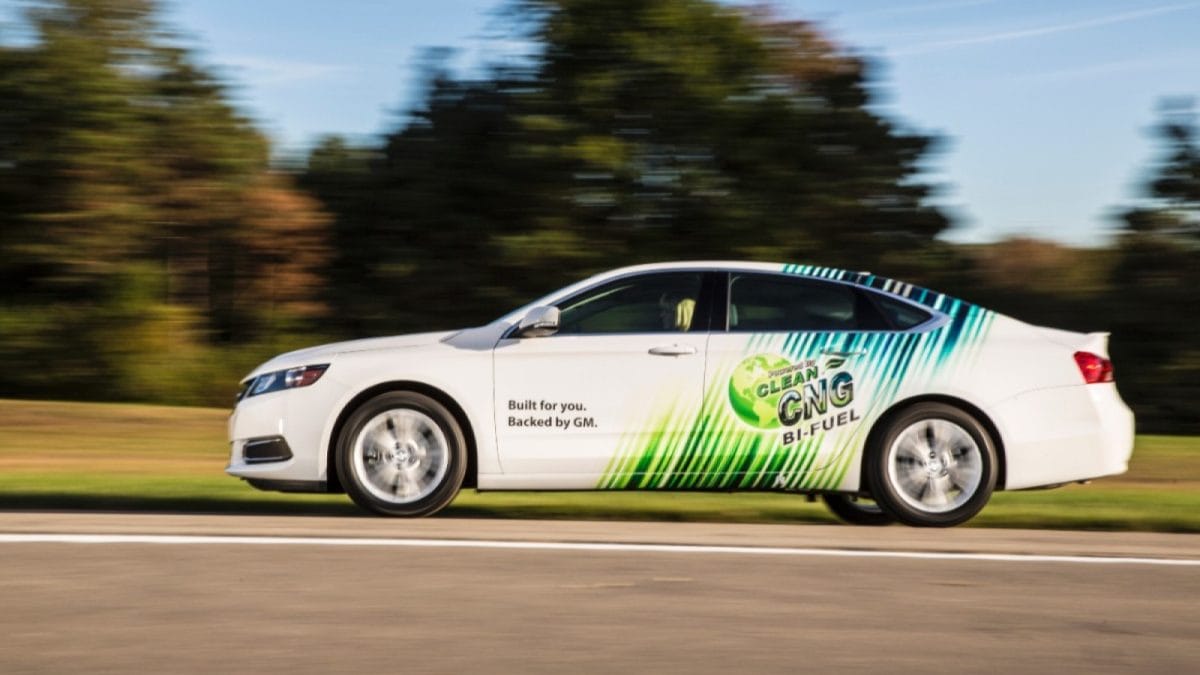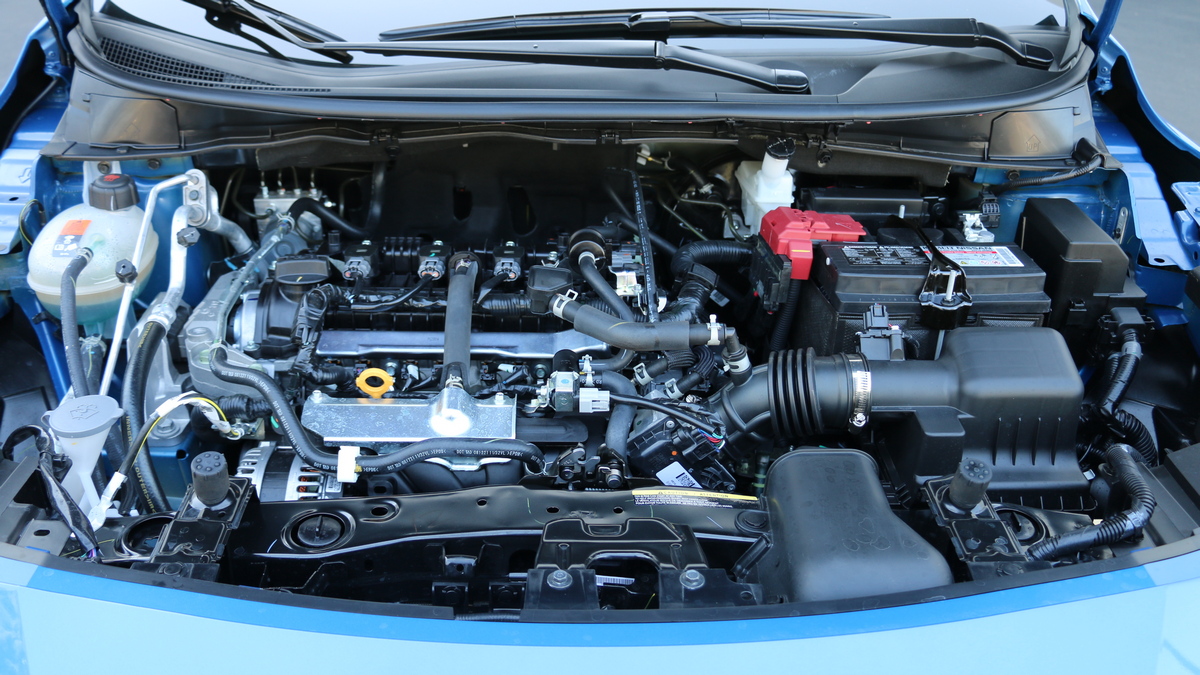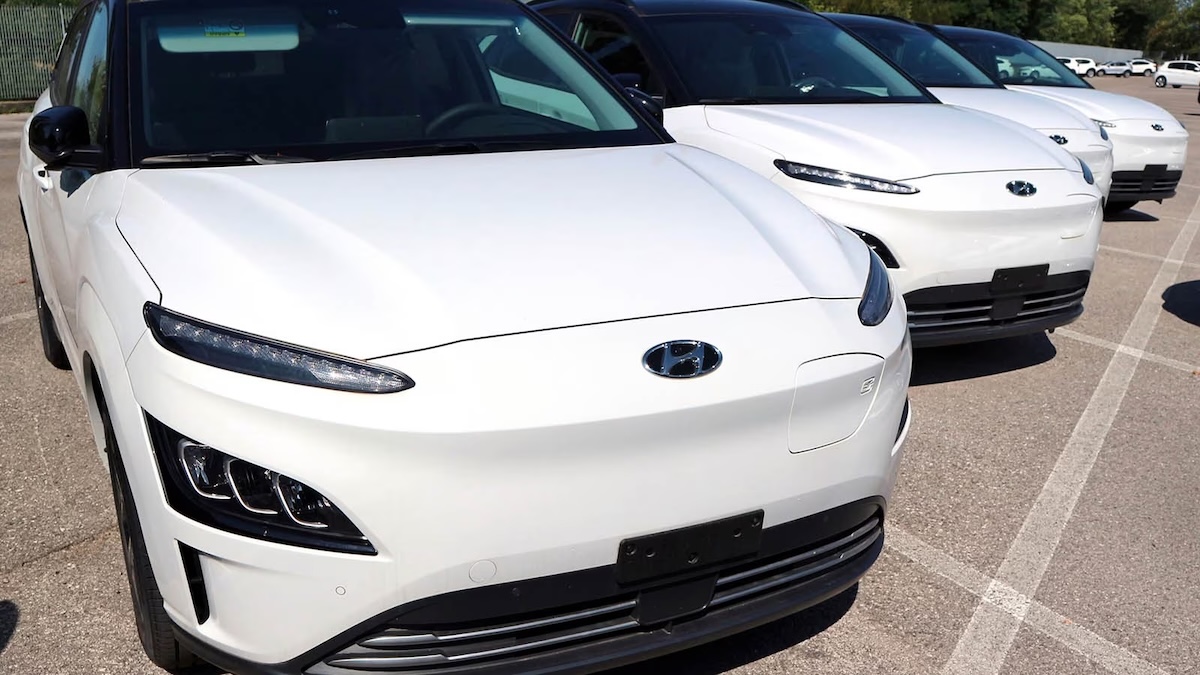Quick Facts About CNG Cars
- Natural gas vehicles (NGVs) produce significantly fewer emissions than gas cars, helping reduce air pollution and greenhouse gases while promoting cleaner air.
- NGVs use compressed natural gas (CNG) stored in large, high-pressure tanks, which reduces trunk space and limits driving range, requiring more frequent refueling than gasoline vehicles.
- Despite lower fuel costs and domestic availability, NGVs face challenges such as higher upfront vehicle costs, limited fueling infrastructure, and safety concerns due to the flammability of compressed natural gas.
In an effort to save money on fuel costs, many Americans turn to electric vehicles (EVs), hybrids, and fuel-efficient small cars.
Electric cars seem to be the future, with nearly every major automaker planning to release at least one electric vehicle in the U.S. this year. However, EV infrastructure still lags well behind the framework supporting gasoline-powered cars.
Is there a third fuel that Americans could use to meet their driving needs?
Automakers have experimented with several during the past decade, including liquefied natural gas (LNG) and compressed natural gas (CNG). Why haven’t natural gas cars caught on?
- What Is a Natural Gas Car?
- How Do Natural Gas Vehicles Work?
- Types of Natural Gas Cars
- What It’s Like to Drive a Natural Gas-Powered Car
- Converting to CNG
- Bottom Line on Natural Gas Vehicles
What Is a Natural Gas Car?
Natural gas is a type of fossil fuel extracted from the earth. It’s mostly composed of methane. A natural gas car, also known as a CNG car (for compressed natural gas), is a vehicle powered by natural gas instead of conventional gasoline or diesel fuel.
How Do Natural Gas Vehicles Work?
In a natural gas car, the compressed fuel is stored in high-pressure tanks, which are typically located in the trunk or under the car. Once pumped into the engine, it powers the car — similar to a conventional gasoline or diesel vehicle.
Natural gas is a cleaner-burning fuel. It produces fewer greenhouse gas emissions and pollutants that contribute to smog and air pollution. Fleet applications are ideal for CNG since fleet vehicles tend to drive predictable routes and can refuel where they are stored. Most automakers also sell such CNG models to private buyers.
Types of Natural Gas Cars
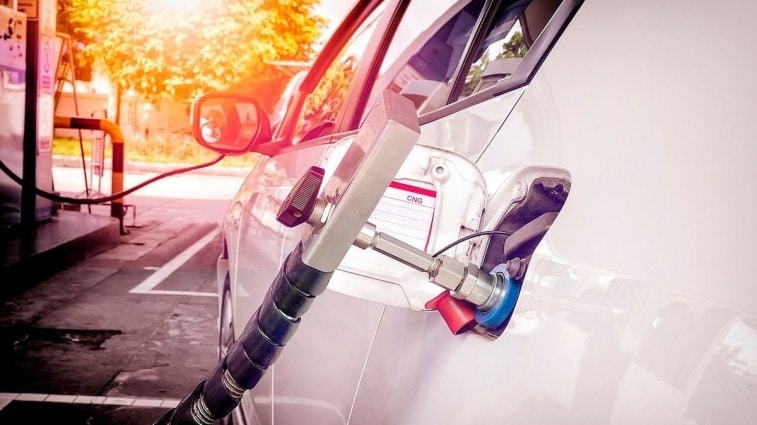
There are two different kinds of natural gas cars: liquefied and compressed. To turn natural gas into usable fuel, engineers must convert it into one of these more manageable forms.
Liquefied natural gas (LNG) is cooled into a liquid form for storage and use. It has limited use as a vehicle fuel because of the expense and complication of keeping it cool. Internal combustion engines can burn it instead of gasoline with just a few design changes, but storing it is challenging. It powers some long-haul trucks, but no company has yet made a practical way to store LNG in a vehicle small enough to serve as a daily driver for the average family.
Compressed natural gas (CNG) is gas that has been compressed into a much smaller volume. Internal combustion engines can burn it instead of gasoline. For a car to run on CNG, it needs a special fuel tank to store the gas under extreme pressure and a device called a fuel regulator that reduces the pressure as it enters the engine. These components are larger than a conventional fuel tank, meaning that CNG cars often have reduced trunk space compared to their gasoline-powered cousins.
Both forms of natural gas are generally less expensive than gasoline at current prices.
MORE: How Much Does It Cost to Charge an Electric Car?
Pros of CNG Cars
- Lower Fuel Costs: Natural gas is generally less expensive than gasoline or diesel fuel. Over time, the cost savings can add up. Additionally, the United States has a more abundant supply of natural gas, since it’s a domestically sourced alternative to imported oil. This abundance helps regulate the price.
- Fewer Emissions: Natural gas is a cleaner-burning fuel. Compared to gasoline or diesel, CNGs produce fewer greenhouse gas emissions and emit lower levels of nitrogen oxides and volatile organic compounds (VOCs).
Cons of CNG Cars
- Lower Fuel Efficiency: Natural gas cars typically have a shorter driving range compared to gasoline or diesel cars, due to the limited amount of compressed natural gas that can be stored in the vehicle. Natural gas cars can be more expensive to purchase upfront compared to traditional gasoline or diesel cars, due to the additional cost of the compressed natural gas fuel system.
- Fewer Fueling Stations: Drivers can fill up their gas tanks at more than 145,000 stations in the United States. According to the U.S. Department of Energy’s Alternative Fuels Data Center, the country has fewer than 750 CNG fueling stations, and roughly one in five of them are in California. Some metro areas like New York and Boston have more, but large stretches of the country have none. If you live where CNG infrastructure is common, you might be able to drive a CNG car for your daily commute and errands. Still, you will likely need to rent a car to take a road trip further outside your area.
- Limited Available Vehicles: According to the Transport Project (formerly Natural Gas Vehicles for America), a coalition advancing natural gas in the transportation sector, there are more than 135,000 vehicles on American roads powered by natural gas. Most of them, however, belong to fleets, buses, and medium- to heavy-duty trucks. Honda produced a CNG-powered version of its Civic small car, the Civic GX, from 1998 through 2015, but no automaker currently manufactures a mainstream CNG-powered car. CNG options are far more common from truck and van manufacturers. Ford, GM, and Ram all offer CNG or bi-fuel options on most trucks and cargo vans. They are mostly sold to companies that operate large fleets of them. The Transport Project says there are more than 23 million NGVs worldwide.
What It’s Like to Drive a Natural Gas-Powered Car
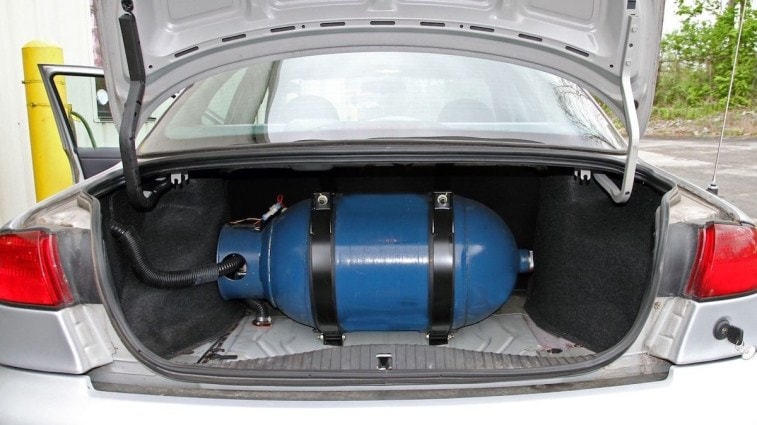
CNG cars feel almost indistinguishable from gasoline-powered cars from the driver’s seat. They accelerate, turn, and brake just like you’re used to. They run quieter than gasoline-powered cars, though not as quiet as EVs.
CNG-powered cars are arguably better for the environment than gasoline-powered cars, as they emit less pollution. Studies vary, but most find that CNG-powered cars emit at least 20% fewer greenhouse gases than gasoline-powered cars.
RELATED: Hydrogen Fuel Cell Cars: Pros and Cons
Converting to CNG
It is possible to convert nearly any car to run on CNG, but the process is expensive. The Clean Air Act requires you to have the work performed by a certified installer. Conversion costs start at around $6,000 and can climb as high as $12,000 for some engines. Gas prices would have to get much higher for that to be a practical economic decision for most drivers.
Bottom Line on Natural Gas Vehicles
Natural gas vehicles produce fewer emissions and offer lower fuel costs, benefiting the environment and drivers. However, limited refueling stations, reduced range, and higher upfront costs have slowed their adoption, mostly restricting use to fleets and heavy-duty vehicles. Advances in technology and infrastructure could expand their appeal in the future.
Editor’s Note: This article has been updated since its initial publication.
